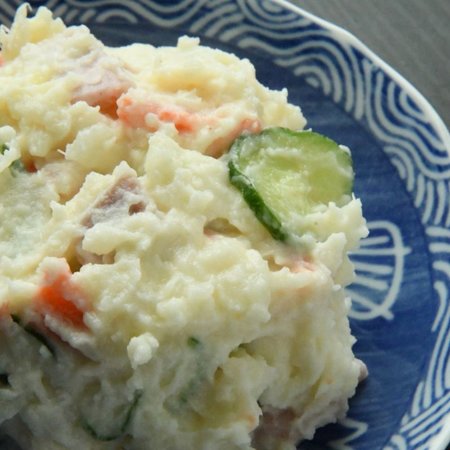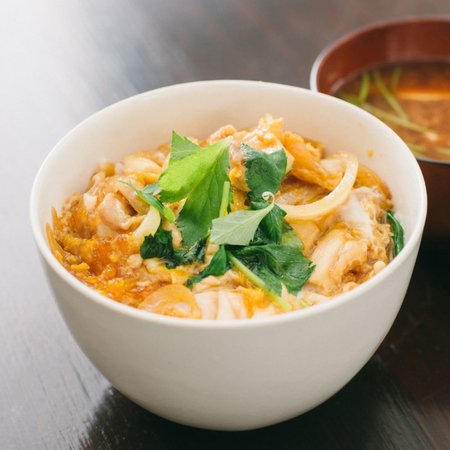Craving Japanese comfort foods but don’t want to splurge by eating out? Here’s some good news: you can easily recreate several Japanese homey dishes in your own kitchen using staples you might already have in your pantry or your local grocery store. Plus, you don’t need Michelin-level cooking skills to master them. Ready to satisfy your cravings? Below, four easy recipes to get you started.

Miso soup is a Japanese meal staple that typically uses two main ingredients: miso paste and dashi (Japanese soup stock mainly made from bonito flakes and dried kelp, also known as kombu). If dashi is hard to come by, vegetable stock is a recommended alternative. A miso soup’s garnish usually varies depending on the region or household. For a simple version, here’s everything you need:
200ML dashi stock (or vegetable stock)
1 tablespoon of miso paste (learn more about the different types of miso paste here)
Your choice of garnish (wakame, tofu, green onions)
Preparing miso soup is pretty simple. First, pour your dashi or vegetable stock into a pot and bring it to a boil. Next, mix the miso paste with the stock using either a sieve or a whisk to ensure the miso dissolves completely into the broth. Once no clumps of miso paste are found in the soup, it’s time to toss in the rest of the ingredients such as tofu, vegetables, etc. You can also season the soup accordingly during this step. If the miso flavour is too strong, you can adjust the flavour by adding more water or stock to the mixture. Let the soup simmer for a couple of minutes and serve warm.

Omurice or Japanese omelette rice can be prepared in several ways, some quick and easy and others needing restaurant-level skill. However, no matter what method is used, the key ingredients for this Japanese comfort food remain the same. Here’s what you need to make the dish at home:
2 eggs
1 serving of rice (preferably, day-old rice)
2 to 3 tablespoons of ketchup (or 1 tablespoon of tomato paste, if you’re feeling fancy)
1 tablespoon of neutral cooking oil (ideally vegetable or canola)
1 to 2 cloves of garlic, minced
½ onion, minced
½ cup choice of meat/ham
½ choice of vegetables (chopped carrots, green pepper, button mushroom, etc.)
Salt and pepper to taste
First, heat your pan and add the oil. Next, sautee minced onions and garlic until fragrant, followed by other ingredients like your meat/ham, vegetables like carrots, cabbage, etc. Once the ingredients in the pan are cooked, add the rice and the ketchup to the mixture. You can also add some soy sauce to balance the sweet-sour taste of the ketchup with some saltiness. Mix the ingredients until the rice is evenly coated with the ketchup, and the meat and veggies are tossed well into the rice. Press down any clumps of rice to ensure that the fried rice will have a coarser texture and appearance. Adjust the seasoning as needed.
Once the rice is done, put a serving on a plate, ideally shaping it like a dome or an oblong to serve as the base for the egg. Set aside. Next, prepare two to three eggs per serving of rice. Beat the eggs until the yolks and the whites are nicely mixed, and season with salt. Pour the egg mixture into a non-stick pan, allowing it to form a circle, crepe-like shape. Once the base of the egg is cooked to the point that it can be lifted off the pan, flip the egg over to the plate of rice you’ve set aside earlier and add more ketchup (or demi-glace sauce) to the side. If you want it to look cleaner, you can tuck the sides of the egg and use it to envelop the shape of the rice.
1. Miso soup

Miso soup. (Photo from: Photo-AC)
Miso soup is a Japanese meal staple that typically uses two main ingredients: miso paste and dashi (Japanese soup stock mainly made from bonito flakes and dried kelp, also known as kombu). If dashi is hard to come by, vegetable stock is a recommended alternative. A miso soup’s garnish usually varies depending on the region or household. For a simple version, here’s everything you need:
200ML dashi stock (or vegetable stock)
1 tablespoon of miso paste (learn more about the different types of miso paste here)
Your choice of garnish (wakame, tofu, green onions)
Preparing miso soup is pretty simple. First, pour your dashi or vegetable stock into a pot and bring it to a boil. Next, mix the miso paste with the stock using either a sieve or a whisk to ensure the miso dissolves completely into the broth. Once no clumps of miso paste are found in the soup, it’s time to toss in the rest of the ingredients such as tofu, vegetables, etc. You can also season the soup accordingly during this step. If the miso flavour is too strong, you can adjust the flavour by adding more water or stock to the mixture. Let the soup simmer for a couple of minutes and serve warm.
2. Omurice

Omurice. (Photo from: Photo-AC)
Omurice or Japanese omelette rice can be prepared in several ways, some quick and easy and others needing restaurant-level skill. However, no matter what method is used, the key ingredients for this Japanese comfort food remain the same. Here’s what you need to make the dish at home:
2 eggs
1 serving of rice (preferably, day-old rice)
2 to 3 tablespoons of ketchup (or 1 tablespoon of tomato paste, if you’re feeling fancy)
1 tablespoon of neutral cooking oil (ideally vegetable or canola)
1 to 2 cloves of garlic, minced
½ onion, minced
½ cup choice of meat/ham
½ choice of vegetables (chopped carrots, green pepper, button mushroom, etc.)
Salt and pepper to taste
First, heat your pan and add the oil. Next, sautee minced onions and garlic until fragrant, followed by other ingredients like your meat/ham, vegetables like carrots, cabbage, etc. Once the ingredients in the pan are cooked, add the rice and the ketchup to the mixture. You can also add some soy sauce to balance the sweet-sour taste of the ketchup with some saltiness. Mix the ingredients until the rice is evenly coated with the ketchup, and the meat and veggies are tossed well into the rice. Press down any clumps of rice to ensure that the fried rice will have a coarser texture and appearance. Adjust the seasoning as needed.
Once the rice is done, put a serving on a plate, ideally shaping it like a dome or an oblong to serve as the base for the egg. Set aside. Next, prepare two to three eggs per serving of rice. Beat the eggs until the yolks and the whites are nicely mixed, and season with salt. Pour the egg mixture into a non-stick pan, allowing it to form a circle, crepe-like shape. Once the base of the egg is cooked to the point that it can be lifted off the pan, flip the egg over to the plate of rice you’ve set aside earlier and add more ketchup (or demi-glace sauce) to the side. If you want it to look cleaner, you can tuck the sides of the egg and use it to envelop the shape of the rice.



